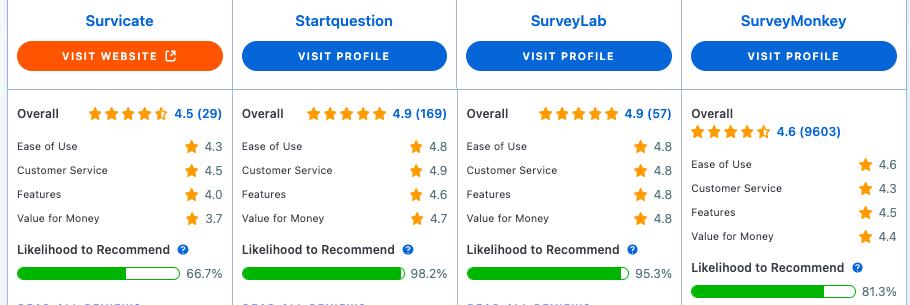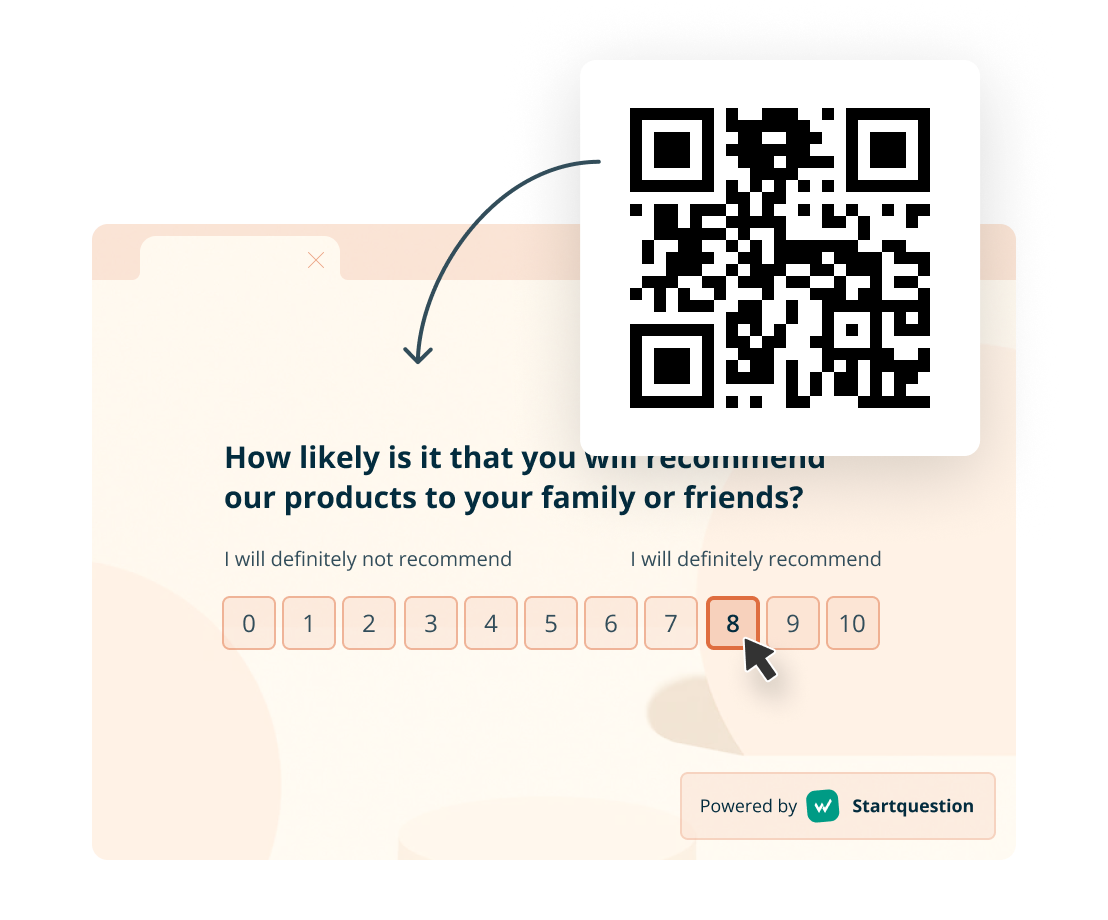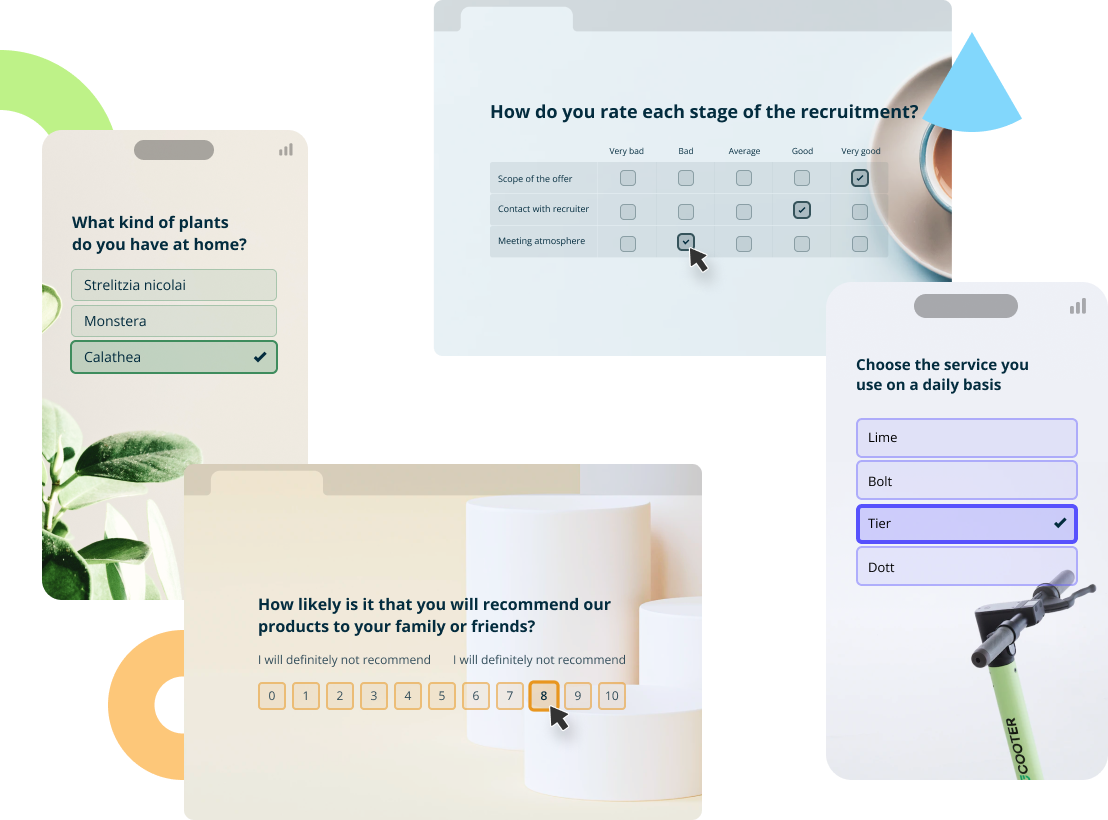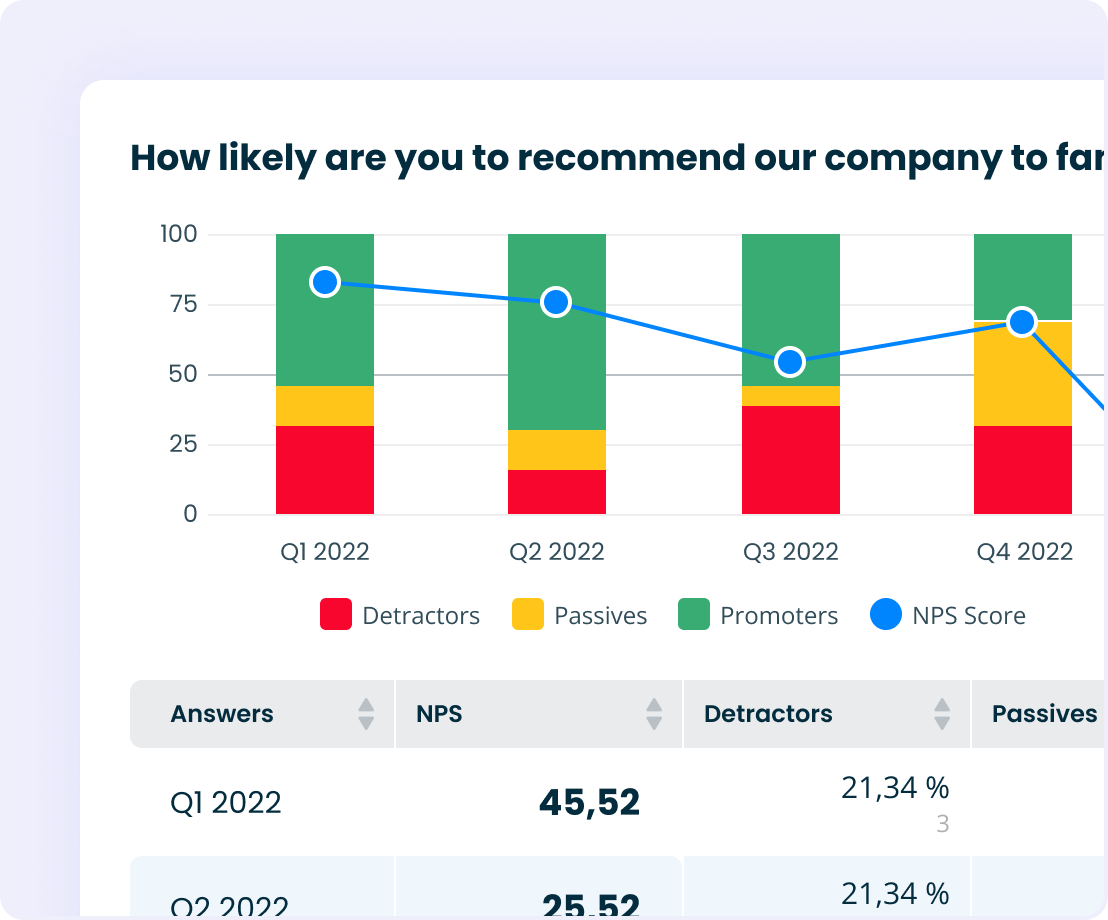Standing out through exceptional service is no longer optional—it’s essential for success. But how can you be sure you’re meeting customer expectations? Measuring service quality offers the clarity you need. Tools like the Servqual Method, Net Promoter Score (NPS), and in-app surveys provide valuable insights into where your service excels and where it needs improvement. It’s not just about gathering data; it’s about asking the right questions and using feedback to enhance customer satisfaction. Ready to take your service to the next level?
Why Measure Customer Service Quality?
Because it’s more than just a trend. It’s a necessity for success.
Benefits of High Quality Service Delivery
Monitoring customer service quality effectively brings a host of benefits, including:
Uncovering Customer Insights: Delving into data and performance metrics offers a clearer understanding of what truly matters to your customers, allowing you to fine-tune their experience in meaningful ways.
Cultivating Loyalty: Satisfied customers don’t just return—they become enthusiastic advocates, driving growth through recommendations and reinforcing your position in the market.
Streamlining Operations: Pinpointing areas for improvement enables you to make targeted adjustments, creating a more efficient and seamless service experience.
Standing Out from the Crowd: In a landscape where every detail can sway a decision, delivering exceptional service becomes your key differentiator.
Sounds promising, right?
In this article, we’ll guide you through practical methods for measuring customer service quality. You’ll discover useful tips and tools to better understand your customers and improve your service standards.
Ready to dive in? Let’s begin!

Practical Methods for Measuring Service Quality
To effectively measure service quality, it’s crucial to employ methods that provide genuine insights into how customers experience your brand.
These approaches, whether through direct feedback or evaluating key interactions, allow you to capture meaningful data. The aim is to track down what’s working and reveal areas that need attention. Up next, we’ll explore specific indicators that will help you understand how to measure service quality.
Follow-up Surveys
Follow-up surveys are an essential strategy for gauging customer sentiment and understanding their experiences after key interactions. Whether it’s post-purchase, after a service call, or following an event, these surveys deliver vital insights into satisfaction levels, helping businesses fine-tune their offerings and customer support. They give companies the chance to address any issues before they escalate, keeping customer loyalty intact.
Use QR Code for Your Follow-Up Survey
One increasingly popular method for distributing follow-up surveys is through QR codes printed on physical materials. Whether on packaging, receipts, or even menus, these codes allow customers to provide feedback instantly by scanning the code with their phones. This not only removes the friction of manually entering a URL but also boosts engagement—response rates have been shown to jump significantly with QR code usage.
Customer Effort Score Survey
Satisfied customers are likelier to remain loyal and promote your brand through word-of-mouth. Many businesses turn to metrics like the Customer Effort Score (CES) to gauge customer satisfaction effectively.
Customer Effort Score Survey
Satisfied customers are likelier to remain loyal and promote your brand through word-of-mouth. Many businesses turn to metrics like the Customer Effort Score (CES) to gauge customer satisfaction effectively.
Customer Effort Score (CES)
Did you know that as many as 80% of customers stop doing business with a company due to poor customer service? In a world where competition is fierce and customer expectations are higher than ever, ensuring top-notch customer service is essential. But how can you measure if your company is truly meeting those expectations? The Customer Effort Score (CES) is a valuable metric that helps assess how easily customers can resolve their issues or get the help they need. It not only highlights your company’s weak spots but also reveals what your customers value most.
Customer Feedback on Service Performance
Customer Effort Score measures the amount of effort a customer has to put in to solve a problem or get the information they need from your company. The easier it is for customers to navigate your service, the more satisfied and loyal they tend to be. CES is focused on a single, straightforward question: “How much effort did it take to resolve your issue with our customer service?” A low CES indicates a smooth, effortless interaction, while a higher score suggests the customer encountered difficulties. It’s particularly useful for businesses that prioritize customer service quality and want to keep a pulse on how well their support teams are performing.
Net Promoter Score (NPS)
Customer loyalty is one of the most valuable assets for any business. Imagine having customers who return to you regularly, choosing your products and services even though they have plenty of alternatives. But how do you actually measure that loyalty? How can you know if your customers are willing to recommend you to others? In today’s complex business environment, tools like NPS have become essential for understanding customer loyalty. NPS is one of the most popular metrics that provides clear answers to these questions.
Simple Tool to Capture Customer Loyalty
Net Promoter Score simplifies the complex dynamics of customer relationships into a single, straightforward number that reflects your brand’s loyalty level. It revolves around one critical question: “How likely are you to recommend our company to a friend or family member?” Based on the responses, customers are divided into three categories—Promoters, Passives, and Detractors—giving businesses a clear snapshot of how their brand is perceived. This breakdown allows companies to see where they stand and what actions they need to take to boost loyalty and satisfaction.
NPS Survey Template
The Net Promoter Score (NPS) is a world-renowned methodology and one of the best business tools for researching customer loyalty. You will draw remarkably valuable conclusions with such simple to collect and valuable feedback.
NPS Survey Template
The Net Promoter Score (NPS) is a world-renowned methodology and one of the best business tools for researching customer loyalty. You will draw remarkably valuable conclusions with such simple to collect and valuable feedback.
Customer Satisfaction Score (CSAT)
Did you know that one in three customers will stop using your services after just one negative experience? Worse yet, many leave without saying a word, leaving you with no insight into what went wrong. In today’s highly competitive business landscape, understanding customer satisfaction is key to building loyalty that sets your brand apart. The Customer Satisfaction Score is a powerful tool that allows you to gauge how satisfied your customers are with specific interactions, helping you gain a complete picture of their needs and expectations.
An Important Customer Experience Metric
CSAT is a metric that measures how content customers are with a specific product, service, or interaction with your company. It revolves around a simple question: “How satisfied are you with [a particular aspect of your experience]?” Customers typically respond on a scale from 1 (very dissatisfied) to 5 (very satisfied). A high CSAT score signals that your company is meeting customer expectations, while a low score highlights areas in need of improvement. It’s a straightforward yet effective way to regularly monitor satisfaction and make data-driven decisions to enhance customer experiences.
Customer Satisfaction Survey
Customer satisfaction is the cornerstone of any successful business. Happy customers are more likely to remain loyal, refer others, and ultimately drive growth.
Customer Satisfaction Survey
Customer satisfaction is the cornerstone of any successful business. Happy customers are more likely to remain loyal, refer others, and ultimately drive growth.
In- app Surveys
In-app surveys offer a smooth and unobtrusive way to collect valuable feedback from users as they interact with your app. Unlike traditional survey methods, which often suffer from low engagement, these surveys are embedded within the app itself, capturing insights at the most relevant moments of the user journey. This contextual approach leads to significantly higher response rates, as the feedback is gathered while users are engaged with the product and their experiences are still fresh.
Improving Service Quality with In-app Surveys
By triggering in-app surveys based on user actions—like completing a task or using a feature—companies gather real-time insights into user satisfaction, preferences, and pain points. This allows for targeted improvements that enhance the app experience. For product teams, the combination of direct feedback and behavioral data becomes a powerful tool, enabling quick adaptations and fostering a dynamic connection with users.
Social Media Monitoring
Social media monitoring isn’t just about tracking mentions of your brand—it’s a sophisticated approach to gaining real-time insights into your audience’s behavior, emotions, and conversations. It gives businesses a bird’s-eye view of their digital landscape, allowing them to catch trends early, fine-tune their messaging, and engage customers more meaningfully. By tapping into these insights, companies can shape their strategies to meet evolving expectations, strengthen relationships, and address emerging issues before they escalate.
Customer Data at Your Fingertips
Moreover, this form of active listening enables brands to detect potential crises and turn negative interactions into opportunities for improvement. It helps pinpoint influencers who resonate with your audience, allowing for collaborations that drive visibility and trust. Beyond crisis management and engagement, social media monitoring is a key tool for ensuring your brand stays agile and responsive, continuously adjusting to the fast-paced world of online conversations.

Five Dimensions of Service Quality – Servqual Method
The Servqual Method is a well-known framework for assessing the gap between customer expectations and actual service experience. Created in 1988 by A. Parasuraman, V.A. Zeithaml, and L.L. Berry, it helps businesses understand where their service may fall short, offering insights to enhance quality. By comparing client expectations with their perceptions of service, Servqual pinpoints areas for improvement, making it a valuable tool for refining customer satisfaction across industries.
Servqual Method – How Does it Work?
The Servqual method identifies five key dimensions that shape how customers evaluate service quality. These factors are crucial in determining whether a service meets, exceeds, or falls short of customer expectations. Those service quality dimensions include:
Tangibility
This refers to the physical presence of your business—its equipment, personnel, and facilities. Customers notice the cleanliness, professionalism, and overall presentation, which sets the tone for how they perceive your brand’s attention to detail and quality.
Reliability
Reliability is all about delivering on promises. Customers expect the service to be provided exactly as promised, without errors or delays. Consistency in meeting these expectations builds a company’s reputation for dependability and trustworthiness.
Responsiveness
This dimension measures how promptly and effectively a company reacts to customer requests or issues. In an age where quick communication is crucial, being responsive signals that the business is attentive and values the customer’s time and concerns.
Assurance
Assurance is the confidence and trust customers feel toward a business, often conveyed through the expertise and professionalism of its staff. Whether through credentials, knowledge, or behavior, businesses must demonstrate competence to earn customer trust, especially in competitive markets.
Empathy
Empathy is the degree of care and personal attention a business provides. Customers want to feel valued, and personalized service can make them feel seen and heard, enhancing their overall experience and loyalty to the brand.
Together, these dimensions form a comprehensive tool for businesses to assess and enhance service quality, ensuring they align closely with service expectations.
Service Quality Questions Examples
The Servqual method is just one way to assess whether customers are receiving promised service. So are the metrics we pointed out earlier. They differ, although they share a common goal – to measure customer success ratio and demonstrate whether support in your organization is working flawlessly.
We measure each of the metrics discussed with different questions (here you can find ready-made templates for the most popular CX surveys). However, we have prepared some universal ones to help you prepare service quality questionnaires. Optimize them to meet the individual requirements of your industry and company.

Sample Question Helpful in Measuring Service Quality
These questions are designed to strike a balance between gathering quantitative data (through rating scales) and qualitative insights (via open-ended responses), helping to measure various dimensions of service quality such as reliability, responsiveness, and empathy.
1. How would you rate the overall quality of our customer service?
This foundational question gives a general sense of how satisfied customers are with the service. It allows businesses to quickly gauge whether their service is meeting expectations and serves as an anchor for deeper analysis into specific areas of the customer experience.
2. Did our representative resolve your issue on the first contact?
A measure of reliability, this question focuses on efficiency and whether the customer’s issue was dealt with swiftly and effectively. First-contact resolution is key to reducing customer effort and ensuring a seamless service experience.
3. How knowledgeable did you find our customer service agent?
This question assesses the agent’s expertise and understanding of the issue. Customers want to feel confident they are speaking with someone who is both well-informed and capable of solving their problem efficiently. This question relates to both assurance and reliability.
4. How satisfied were you with the timeliness of the response?
Timely responses are a direct reflection of responsiveness. Customers value speed, especially when facing urgent concerns. This question helps pinpoint how well your service team manages time-sensitive interactions and meets customer needs in fast-paced situations.
5. Was the service representative courteous and professional?
Courtesy and professionalism tie into the empathy and assurance dimensions of service quality. Customers want to feel respected and valued during their interactions. This question helps ensure that agents are building trust and rapport with customers through respectful behavior.

6. How clearly did the service rep explain the solution to your issue?
Clear communication is essential for resolving problems effectively. This question assesses whether the customer left the conversation understanding the resolution, which reflects the agent’s ability to explain solutions and the business’s overall communication standards.
7. How likely are you to recommend our services to friends or family?
The classic NPS question. It’s one of the best indicators of customer loyalty and overall satisfaction. Customers who would recommend your service to others are more likely to be loyal and satisfied, while those who wouldn’t may expose areas that need attention.
8. On a scale from 1 to 5, how easy was it to contact our customer service?
Ease of contact is crucial for positive service experiences. This question measures accessibility, ensuring that customers can easily reach help when they need it. If this score is low, it might indicate bottlenecks in your contact channels that need to be addressed.
9. What could we have done better to improve your experience with us?
This open-ended question is designed to gather actionable, specific feedback. Customers often have unique perspectives on how their experience could be improved, providing insight into areas that might not be covered by standard survey questions.
10. How would you describe your overall experience with our service in a few words?
This question allows for qualitative feedback, where customers can summarize their experience in their own words. It’s helpful in uncovering underlying emotions or recurring themes in customer experiences that may not be immediately apparent from numerical ratings alone.




